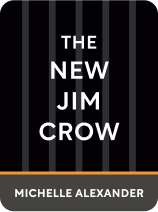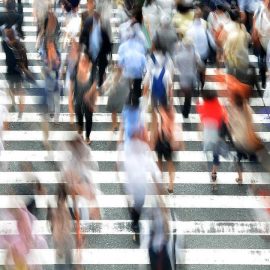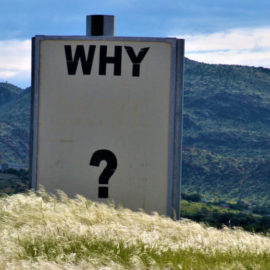

This article is an excerpt from the Shortform summary of "The New Jim Crow" by Michelle Alexander. Shortform has the world's best summaries of books you should be reading.
Like this article? Sign up for a free trial here .
What does ending mass incarceration mean? How hard is ending mass incarceration?
Ending mass incarceration is a challenge because of the vicious cycles that reinforce institutional racism. The numerous laws, policies, and procedures all contribute to the problem.
Read on to understand the challenges with ending mass incarceration.
Vicious Cycles and Ending Mass Incarceration
Positive feedback loops are incredibly powerful and can lead to lock-in of a situation like the New Jim Crow. Here are vicious cycles possibly at play that make ending mass incarceration difficult:
- A higher absolute # of black people being arrested increases public perception of black crime, which increases # of black people being locked up, undermining the movement to end mass incarceration.
- Higher rates of searching black people leads police to find more drugs on them by absolute count, which reinforces higher search rates and higher absolute counts.
- For instance, if you search 80 black people and 20 white people, and you find 10 black drug offenders and 5 white offenders, it’ll seem as though the black drug problem is far worse, if you don’t think about the statistics hard enough. “Most people being jailed are black – so they must be more likely to have drugs.”
- In general, confirmation bias is a powerful feedback loop, wherein people select the data that confirms their beliefs and rejects other data, thus further entrenching their beliefs. This psychology makes ending mass incarceration harder.
- Police target black drug users and not white drug users partially because of the decreased political risk. Putting more black people in jail, and reducing their civic involvement, makes them even less likely to protest the system, which makes targeting black drug users easier.
- Because blacks are locked up in large %, it’s likely that any black person has had indirect experience with criminal justice system. Thus even innocent blacks can be more likely barred from jury, which limits their voice in the legal process, which increases black conviction rate.
- Because of the higher rate of arrests, blacks are more likely to be seen as repeat offenders and get harsher treatments. In other words, some people may face more of a binary 3 strikes or 0 strikes, rather than a linear progression from 0 to 1 to 2 strikes.
- Concentrated police action in black ghettos makes further concentration more likely, since whites don’t want police intervention in their neighborhoods and ex-offenders return to their neighborhoods.
- The psychology of being a victim presents more probable cause reasons for non-racial targeting, like appearing nervous around police or running away. Thus, stories about black people being arrested may make black people even more fearful, and thus more likely to be arrested.
- As a defensive mechanism, embracing the stigma of criminalism as gangsta love is self-destructive and leads to more criminalism, which further reinforces the cultural acceptance of criminalization and derails the movement to end mass incarceration.
When powerful positive feedback loops are at play, strong interventions (like affirmative action or social programs) can perturb the system and disrupt the feedback loop, encouraging ending mass incarceration.
- For instance, having more black prosecutors and police officers may allow more empathy for black offenders that white offenders have enjoyed (the point above about how a drug user can be seen either as a criminal or as a wayward youth who fell off the path). This can help the movement to end mass incarceration.
- However, Alexander is skeptical of the power of single interventions like affirmative action, saying that black achievers are encouraged to play with the system, not challenge it.

———End of Preview———
Like what you just read? Read the rest of the world's best summary of Michelle Alexander's "The New Jim Crow" at Shortform .
Here's what you'll find in our full The New Jim Crow summary :
- How the US prison population increased 10x in 30 years because of harsh drug policies
- How being "tough on crime" was deeply motivated in discrimination against black people
- Why being convicted for a crime is essentially a life sentence of poverty and return to prison






